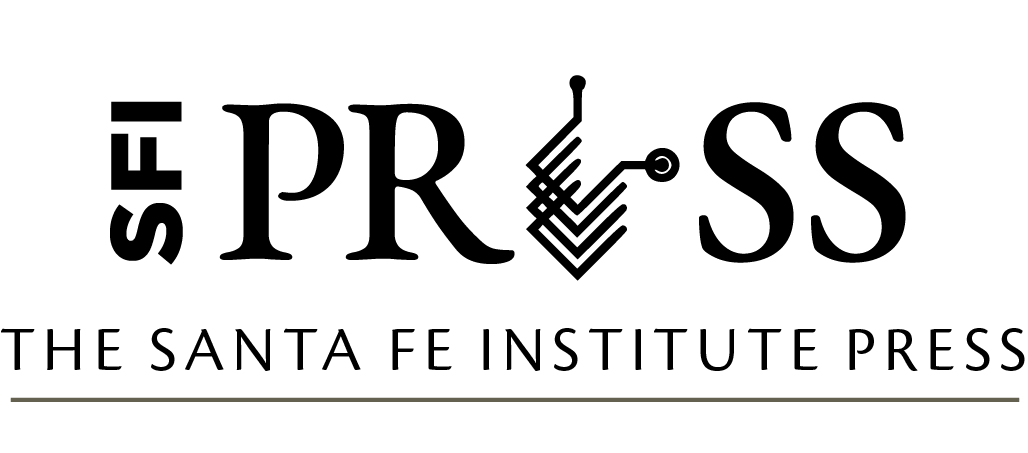Transforming Metastable Memories: The Nonequilibrium Thermodynamics of Computation
The Energetics of Computing in Life & Machines pp 353-381
DOI: 10.37911/9781947864078.13
13. Transforming Metastable Memories: The Nonequilibrium Thermodynamics of Computation
Author: Paul M. Riechers, University of California, Davis
Excerpt
Modern scientific understanding suggests that computation can be performed without any dissipation at all—a perplexing result, since we still plug in our computers and eat to fuel our brains every day. To reconcile this discrepancy between theoretical possibility and familiar reality requires a thermodynamics of realistic computation, where nonequilibrium distributions, corresponding to metastable memories, are transformed under practical constraints by controlled driving in finite time. From the perspective of nonequilibrium thermodynamics employed here, logical irreversibility is indeed compatible with thermodynamic reversibility if accompanied by a metastable increase in nonequilibrium addition to free energy, which can later be leveraged to reclaim the original work input—hence computation without dissipation. However, our demands for speed and modularity each implies trade-offs that necessitate dissipation, while practical limitations of the controller’s knowledge and dexterity further challenge the attainable thermodynamic efficiency of computation. Here we develop a few of the fundamental thermodynamic consequences of transforming metastable memories and identify several practical opportunities for greater energetic efficiency.
The chapter contains several new results, including a new decomposition of the nonequilibrium free energy that shows under what circumstances a coarse-grained description is sufficient to understand the thermodynamics of metastable memory transformations; implications for composite memory systems and the role of knowledge in work extraction; the thermodynamic cost of modular computation, which generalizes a recent result by Boyd, Mandal, and Crutchfield (2018); and the minimal work expected of any two-input–oneoutput logic function and the dissipation incurred when these circuits are not designed for the statistics of the memories they transform. We close with a short tutorial that explicitly calculates the fundamental thermodynamic limits of the universal NAND gate.
Metastable Memory Systems
We start by considering a memory system, which is simply a physical system meant to store information. During computations, the dynamics of the memory system is driven by an external work reservoir to transform the memory from its initial state to its final state. For the memory system to be of much practical utility, it should be able to store memories robustly between computations. One way to achieve this is with nonvolatile memory elements that—through metastability—retain their memories over long time scales without active power consumption, even when the computer is turned off.
Bibliography
Åberg, J. 2013. “Truly Work-like Work Extraction via a Single-Shot Analysis.” Nature Communications 4:1925.
Bonança, M. V. S., and S. Deffner. 2014. “Optimal Driving of Isothermal Processes Close to Equilibrium.” Journal of Chemical Physics 140 (24): 244119.
Boyd, A. B., and J. P. Crutchfield. 2016. “Maxwell Demon Dynamics: Deterministic Chaos, the Szilard Map, and the Intelligence of Thermodynamic Systems.” Physical Review Letters 116 (19): 190601.
Boyd, A. B., D. Mandal, and J. P. Crutchfield. 2017. “Leveraging Environmental Correlations: The Thermodynamics of Requisite Variety.” Journal of Statistical Physics 167, no. 6 (June): 1555–1585.
————. 2018. “Thermodynamics of Modularity: Structural Costs Beyond the Landauer Bound.” Phys. Rev. X 8 (3): 031036.
Boyd, A. B., D. Mandal, P. M. Riechers, and J. P. Crutchfield. 2017. “Transient Dissipation and Structural Costs of Physical Information Transduction.” Physical Review Letters 118 (22): 220602.
Esposito, M. 2012. “Stochastic Thermodynamics under Coarse Graining.” Physical Review E 85 (4): 041125.
Esposito, M., and C. Van den Broeck. 2011. “Second Law and Landauer Principle Far from Equilibrium.” Europhysics Letters 95 (4): 40004.
Garner, A. J. P., J. Thompson, V. Vedral, and M. Gu. 2017. “Thermodynamics of Complexity and Pattern Manipulation.” Physical Review E 95 (4): 042140.
Gokler, C., A. Kolchinsky, Z. Liu, I. Marvian, P. Shor, O. Shtanko, K. Thompson, D. Wolpert, and S. Lloyd. 2017. “When Is a Bit Worth Much More than kT ln2?” arXiv:1705.09598.
Kolchinsky, A., and D. H. Wolpert. 2017. “Dependence of Dissipation on the Initial Distribution over States.” Journal of Statistical Mechanics: Theory and Experiment 2017 (8): 083202.
Lloyd, S. 1989. “Use of Mutual Information to Decrease Entropy: Implications for the Second Law of Thermodynamics.” Physical Review A 39 (10): 5378.
Mandal, D., and C. Jarzynski. 2016. “Analysis of Slow Transitions between Nonequilibrium Steady States.” Journal of Statistical Mechanics: Theory and Experiment 2016 (6): 063204.
Owen, J. A., A. Kolchinsky, and D. H. Wolpert. 2017. “Number of Hidden States Needed to Physically Implement a Given Conditional Distribution.” arXiv:1709.00765.
Parrondo, J. M. R., J. M. Horowitz, and T. Sagawa. 2015. “Thermodynamics of Information.” Nature Physics 11 (2): 131.
Riechers, P. M., and J. P. Crutchfield. 2017. “Fluctuations When Driving between Nonequilibrium Steady States.” Journal of Statistical Physics 168, no. 4 (August): 873–918.
Salamon, P., and R. S. Berry. 1983. “Thermodynamic Length and Dissipated Availability.” Physical Review Letters 51 (13): 1127–1130.
Sivak, D. A., and G. E. Crooks. 2012. “Thermodynamic Metrics and Optimal Paths.” Physical Review Letters 108 (19): 190602.
Takara, K., H.-H. Hasegawa, and D. J. Driebe. 2010. “Generalization of the Second Law for a Transition between Nonequilibrium States.” Physics Letters, Series A 375 (2): 88–92.
Zulkowski, P. R., and M. R. DeWeese. 2014. “Optimal Finite-Time Erasure of a Classical Bit.” Physical Review E 89 (5): 052140.
